#Feasibility studies and Project reports
Explore tagged Tumblr posts
Text
Learn how to conduct a comprehensive feasibility study in the UAE with this step-by-step guide, covering market research, financial assessments, and operational feasibility for successful project planning.
#Feasibility study in UAE#feasibility study report#feasibility study data#feasibility study companies#feasibility study for startup business#feasibility study in project management
0 notes
Text
From Idea to Execution: How PFRs & DPRs Guide the Course of Your Project
Have you ever had a fantastic business idea? PFRs and DPRs serve as your success road maps! The distinction between Detailed Project Reports (DPRs) and Pre-Feasibility Reports (PFRs) is explained in this guide. Discover how DPRs offer a blueprint for bringing an idea to reality, while PFRs evaluate an idea's viability.
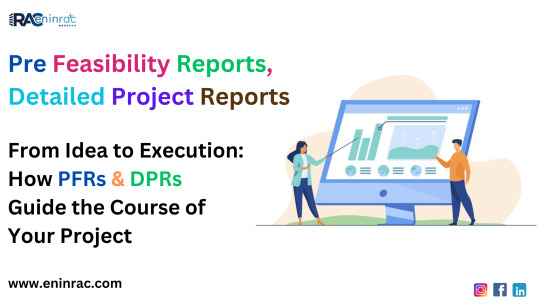
#PFR's (Pre Feasibility Reports) And DPR's (Detailed Project Reports)#Pre Feasibility Reports#Pre Feasibility Study#Pre Feasibility Study Meaning#Detail Project Report
0 notes
Text
#SgurrEnergy#Renewable Energy#Renewable Energy Consultants#Feasibility Study of Solar Power Plant#Feasibility Study of Solar Power Plant in India#Detailed Project Report For Solar PV Project#Solar PV Project
0 notes
Text
Dandelion News - March 8-14
Like these weekly compilations? Tip me at $kaybarr1735 or check out my Dandelion Doodles!
1. Caribbean reef sharks rebound in Belize with shark fishers’ help

“Caribbean reef shark populations have rebounded beyond previous levels, more than tripling at both Turneffe and Lighthouse atolls[…. The recovery] arose from a remarkable synergy among shark fishers, marine scientists and management authorities[….]”
2. Landmark Ruling on Uncontacted Indigenous Peoples’ Rights Strikes at Oil Industry
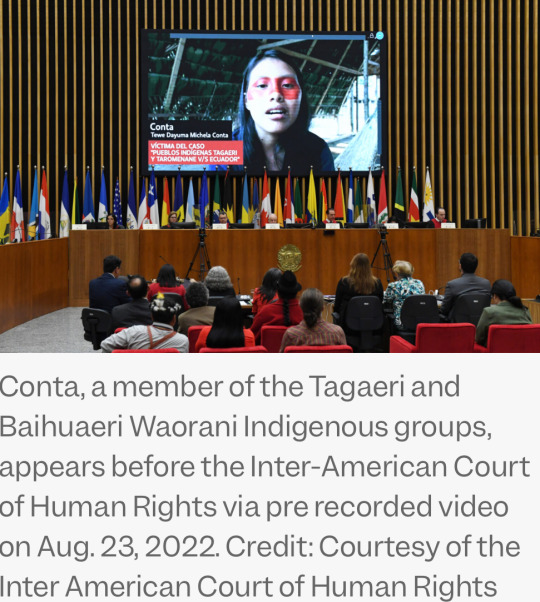
“[T]he Ecuadorian government [must] ensure any future expansion or renewal of oil operations does not impact Indigenous peoples living in voluntary isolation. [… E]ffective measures must be adopted to prevent serious or irreversible damage, which in this case would be the contact of these isolated populations,” said the opinion[….]”
3. America's clean-energy industry is growing despite Trump's attacks. At least for now

“The buildout of big solar and battery plants is expected to hit an all-time high in 2025, accounting for 81% of new power generation[….] The industry overall has boomed thanks to falling technology costs, federal tax incentives and state renewable-energy mandates.”
4. Study says endangered Asian elephant population in Cambodia is more robust than previously thought

“A genetic study of Asian elephants […] reveals a larger and more robust population than previously thought, raising hopes the endangered species could slowly recover. […] “With sufficient suitable habitat remaining in the region, the population has the potential to grow if properly protected,” the report concludes.”
5. Scientists are engineering a sense of touch for people who are paralyzed
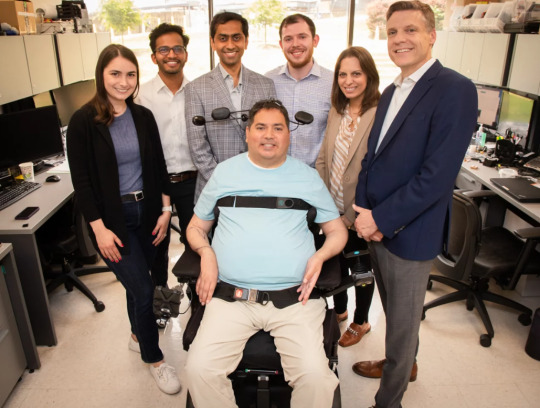
“[Engineers are] testing a system that can restore both movement and sensation in a paralyzed hand. [… A]fter more than a year of therapy and spinal stimulation, [… h]is increased strength and mobility allow him to do things like pet his dog. And when he does, he says, "I can feel a little bit of the fur."“
6. Florida is now a solar superpower. Here’s how it happened.
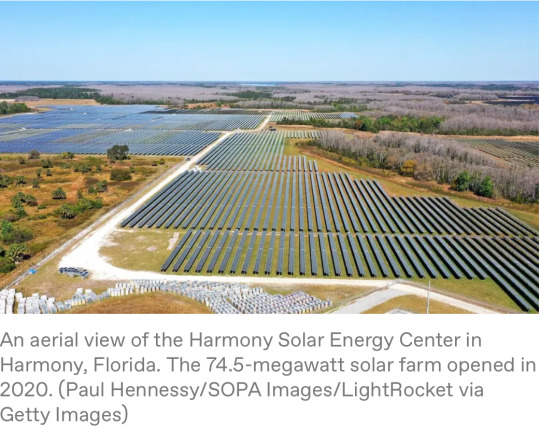
“In a first, Florida vaulted past California last year in terms of new utility-scale solar capacity plugged into its grid. It built 3 gigawatts of large-scale solar in 2024, making it second only to Texas. And in the residential solar sector, Florida continued its longtime leadership streak.”
7. Rare frog rediscovered after 130 years
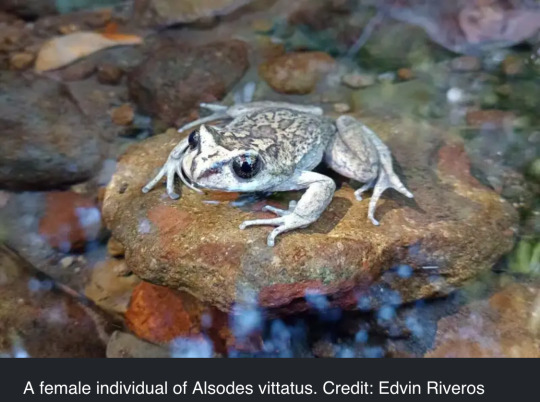
“The researchers discovered two populations of the frog[….] "The rediscovery of A. vittatus allowed us to obtain, more than a century after its description, the first biological and ecological data on the species.” [… S]hedding light on where and how they live is the first step in protecting them.”
8. Community composting programs show promise in reducing household food waste

“The program [increased awareness and reduced household waste, and] also addressed common barriers to home composting, including pest concerns and technical challenges that had previously discouraged participants from composting independently.”
9. Pioneering Australian company marks new milestone on “mission” to upcycle end-of-life solar panels
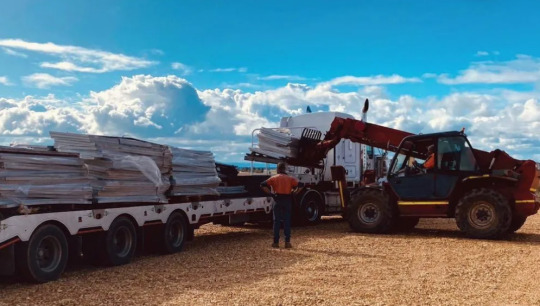
“[…] SolarCrete – a pre-mixed concrete made using glass recovered from used solar panels – will form part of the feasibility study[….] A second stage would then focus on the extraction of high value materials[…] for re-use in PV and battery grade silicon, [… and] electrical appliances[….]”
10. Beavers Just Saved The Czech Government Big Bucks

“The aim was to build a dam to prevent sediment and acidic water from two nearby ponds from spilling over, but the project was delayed for years due to negotiations over land use[….] Not only did the industrious rodents complete the work faster than the humans had intended, they also doubled the size of the wetland area that was initially planned.”
March 1-7 news here | (all credit for images and written material can be found at the source linked; I don’t claim credit for anything but curating.)
#hopepunk#good news#shark#fishing#nature#ecuador#first nations#oil drilling#clean energy#solar energy#solar power#elephants#elephant#conservation#animals#science#medicine#paralyzed#florida#solar panels#frogs#endangered species#endangered#compost#community#australia#recycling#beaver#habitat restoration#beaver dam
141 notes
·
View notes
Text
Cancelled Missions: Apollo-Soyuz Test Program II, with a Salyut Space Station

"The Apollo-Soyuz Test Project (ASTP) had its origins in talks aimed at developing a common U.S./Soviet docking system for space rescue. The concept of a common docking system was first put forward in 1970; it was assumed at that time, however, that the docking system would be developed for future spacecraft, such as the U.S. Space Station/Space Shuttle, not the U.S. Apollo Command and Service Module (CSM) and Soviet Soyuz spacecraft in operation at the time.

A joint U.S./Soviet space mission served the political aims of both countries, however, so the concept of a near-term docking mission rapidly gained momentum. In May 1972, at the superpower summit meeting held in Moscow, President Richard Nixon and Premier Alexei Kosygin signed an agreement calling for an Apollo-Soyuz docking in July 1975.
NASA and its contractors studied ways of expanding upon ASTP even before it was formally approved; in April 1972, for example, McDonnell Douglas proposed a Skylab-Salyut international space laboratory . A year and a half later (September 1973), however, the aerospace trade magazine Aviation Week & Space Technology cited unnamed NASA officials when it reported that, while the Soviets had indicated interest in a 1977 second ASTP flight, the U.S. space agency was 'currently unwilling' to divert funds from Space Shuttle development.

Salyut Apollo docking diagram
Nevertheless, early in 1974 the Flight Operations Directorate (FOD) at NASA Johnson Space Center (JSC) in Houston, Texas, examined whether a second ASTP mission might be feasible in 1977. The 1977 ASTP proposal aimed to fill the expected gap in U.S. piloted space missions between the 1975 ASTP mission and the first Space Shuttle flight.
The brief in-house study focused on mission requirements for which NASA JSC had direct responsibility. FOD assumed that Apollo CSM-119 would serve as the prime 1977 ASTP spacecraft and that the U.S. would again provide the Docking Module (DM) for linking the Apollo CSM with the Soyuz spacecraft. CSM-119 had been configured as the five-seat Skylab rescue CSM; work to modify it to serve as the 1975 ASTP backup spacecraft began as FOD conducted its study, soon after the third and final Skylab crew returned to Earth in February 1974. FOD suggested that, if a backup CSM were deemed necessary for the 1977 ASTP mission, then the incomplete CSM-115 spacecraft should get the job. CSM-115, which resided in storage in California, had been tapped originally for the cancelled Apollo 19 moon landing mission.
FOD also assumed that the ASTP prime crew of Thomas Stafford, Vance Brand, and Deke Slayton would serve as the backup crew for the 1977 ASTP mission, while the 1975 ASTP backup crew of Alan Bean, Ronald Evans, and Jack Lousma would become the 1977 ASTP prime crew. FOD conceded, however, that this assumption was probably not realistic. If new crewmembers were needed, FOD noted, then training them would require 20 months. They would undergo 500 hours of intensive language instruction during their training.
FOD estimated that Rockwell International support for the 1977 ASTP flight would cost $49.6 million, while new experiments, nine new space suits, and 'government-furnished equipment' would total $40 million. Completing and modifying CSM-115 for its backup role would cost $25 million. Institutional costs — for example, operating Mission Control and the Command Module Simulator (CMS), printing training manuals and flight documentation, and keeping the cafeteria open after hours — would add up to about $15 million. This would bring the total cost to $104.7 million without the backup CSM and $129.7 million with the backup CSM.
The FOD study identified 'two additional major problems' facing the 1977 ASTP mission, both of which involved NASA JSC's Space Shuttle plans. The first was that the CMS had to be removed to make room for planned Space Shuttle simulators. Leaving it in place to support the 1977 ASTP mission would postpone Shuttle simulator availability.

A thornier problem was that 75% of NASA JSC's existing flight controllers (about 100 people) would be required for the 1977 ASTP in the six months leading up to and during the mission. In the same period, NASA planned to conduct "horizontal" Space Shuttle flight tests. These would see a Shuttle Orbiter flown atop a modified 747; later, the aircraft would release the Orbiter for an unpowered glide back to Earth. FOD estimated that NASA JSC would need to hire new flight controllers if it had to support both the 1977 ASTP and the horizontal flight tests. The new controllers would receive training to support Space Shuttle testing while veteran controllers supported the 1977 ASTP.
The ASTP Apollo CSM (CSM-111) lifted off on a Saturn IB rocket on 15 July 1975 with astronauts Thomas Stafford, Vance Brand, and Donald Slayton on board. The ASTP Saturn IB, the last rocket of the Saturn family to fly, lifted off from Launch Complex (LC) 39 Pad B, one of two Saturn V pads at Kennedy Space Center, not the LC 34 and LC 37 pads used for Saturn IB launches in the Apollo lunar program. This was because NASA had judged that maintaining the Saturn IB pads for Skylab and ASTP would be too costly. A 'pedestal' (nicknamed the 'milkstool') raised the Skylab 2, 3, and 4 and ASTP Saturn IB rockets so that they could use the Pad 39B Saturn V umbilicals and crew access arm.

Once in orbit, the ASTP CSM turned and docked with the DM mounted on top of the Saturn IB's second stage. It then withdrew the DM from the stage and set out in pursuit of the Soyuz 19 spacecraft, which had launched about eight hours before the Apollo CSM with cosmonauts Alexei Leonov and Valeri Kubasov on board. The two craft docked on 17 July and undocked for the final time on July 19. Soyuz 19 landed on 21 July. The ASTP Apollo CSM, the last Apollo spacecraft to fly, splashed down near Hawaii on 24 July 1975 — six years to the day after Apollo 11, the first piloted Moon landing mission, returned to Earth.
The proposal for a 1977 ASTP repeat gained little traction. Though talks aimed at a U.S. Space Shuttle docking with a Soviet Salyut space station had resumed in May 1975, no plans for new U.S.-Soviet manned missions existed when the ASTP Apollo splashed down. Shuttle-Salyut negotiators made progress in 1975-1976, but the U.S. deferred signing an agreement until after the results of the November 1976 election were known.

In May 1977, the sides formally agreed that a Shuttle-Salyut mission should occur. In September 1978, however, NASA announced that talks had ended pending results of a comprehensive U.S. government review. Following the December 1979 Soviet invasion of Afghanistan, work toward joint U.S.-Soviet piloted space missions was abandoned on advice from the U.S. Department of State. It would resume a decade later as the Soviet Union underwent radical internal changes that led to its collapse in 1991 and the rebirth of the Soviet space program as the Russian space program."
-Article from "No Shortage of Dreams" blog: link
Drew Granston: link
source, source, source
#Apollo-Soyuz Test Program II#Apollo–Soyuz#Apollo Soyuz Test Project#ASTP#Apollo CSM Block II#CSM-119#Docking Module#SLA-18#Saturn IB#SA-209#Rocket#ASTP II#Space Shuttle Salyut#Salyut Space Station#Soviet Space Program#Soyuz-U#cancelled#Cancelled Missions#1977#my post
44 notes
·
View notes
Text

Threat Index - The Scourge
The threat has been reclassified to Conqueror after further accounting adjusted with deep time.
The Scourge are a eusocial species with nigh-unpredictable behavior patterns, likely from a very different reality. Wherever they came from, their environment allowed for the evolution of interdimensional travel. With no technology of their own, The Scourge possess the natural ability to step into different dimensions. They have been observed utilizing these abilities to ambush and kill targets, and can presumably use a similar kind of interdimensional to "call for backup" by sending a signal to other dimensions to be received by other scourges.
The Scourge possess a unique physiology, likely for the purpose of adapting to all manner of realities. Their bodies are made of what researchers have dubbed as "Protoplasm," a seldom understood, ephemeral material projected from their crystalline heads. Due to this, the only way to kill one of The Scourge is by shattering its head, any and all trauma to its body will only serve to slow it down or cripple it for a short amount of time before they regenerate. When disconnected from the head, or if the head is shattered, protoplasm appears to rapidly deteriorate into nothing, meaning no tissue samples can be collected for study. However, observations during live encounters reveal that protoplasm may act as a conductor for the energy transmitted and/or generated by the head. The Scourge are capable of firing beams from protoplasm, the properties of which are far more destructive than electricity or typical lasers, cutting through material more efficiently while retaining the tendency to conduct and spread out. The heads themselves emit several types of unidentified exotic particles, leading us to believe that the head is what channels connective signals and streams of energy from other dimensions and other Scourges. Additionally, in every recorded encounter with The Scourge, the head is always exposed despite the feasible possibility for it be completely engulfed and protected by protoplasm. Due to this observation, we understand the head to be a sort of all-purpose sensory organ which can only perceive surroundings when directly exposed.
The behavior patterns of The Scourge are perhaps even less understood than their physiology. Initially, they were thought to be highly aggressive, but this is only the case sometimes. It appears they "choose" targets, or groups of targets, through an unknown process or criteria. It is also unknown why they kill people at all, it is understood to not be for sustenance as the corpses of their victims are often left behind. When encountering The Scourge, those who aren't targets can freely disengage, while those who are targeted will be hunted down. It is worth noting that regardless of targeting, The Scourge will usually attack anyone who interacts with them up close. If a target manages to survive long enough, The Scourge will eventually decide to stop pursuing. Rarely, The Scourge will "mark" a target, this is signified by an arc of energy which behaves similarly to an arc of electricity, striking the target with the same predetermination that causes lightning to strike metal. The Scourge will never stop hunting a marked target, as such they will always die. While alive, marked targets report hallucinations and strange dreams, though this is unclear whether these are side effects from being connected to The Scourge's interdimensional network or merely the effects of stress. While it would help in determining how The Scourge select targets, no correlation between marked targets has been identified. While they could have a theoretically unparalleled fortitude, they often behave self-destructively by going head first into what would be certain doom for the individual, but not the group. This phenomenon is best explained by identifying The Scourge as a eusocial species, where actions which result in death for the individual but benefit the group are common. Their self destructive nature also suggests that their numbers and pool of resources may be effectively infinite. The Scourge have been sighted in upwards of fifty known dimensions, the details of which are listed in their respective incident reports.
#oc#oc lore#original character#worldbuilding#creature#drawing#my art#oc art#digital art#monster#art#alien species#original species#wall of text#yapping
6 notes
·
View notes
Text
I want to write a more fleshed out post on Stamford as a city because I feel like the city is in a really unique position as the fastest growing city in CT, and they really aren't taking advantage of it very well.
To start, based on statistic from the US Census Bureau, using data for the percent increase of population over 10 years and 3 years, Stamford is projected to overtake the population of Bridgeport in about 20-25 years. This might seem like a long time, but considering Bridgeport has been the largest city for over a century, 25 years is really not that long of a time.
Given that Stamford is about to be the largest city in Connecticut, they are put in this unique position where they are able to improve the city in all regards, and they have been. Zoning policy, affordable housing, environmental sustainability, education, and much more are all topics discussed on the cities 2015 Master Plan. One topic discusses on this Master Plan that I really like was sustainable buildings. Stamford has definitely put a lot of effort into being a sustainable community and I really like that. That's about where my compliments for this plan ends, though.
The plan discusses transportation and mobility in section 4 but specifically I have a problem with section 4C, intra-city mobility. The plan lays out a way to reduce traffic congestion, but it all has to do with the basic more lanes equals less traffic sentiment that we keep seeing in the US. On top of this, there was apparently a city report on the feasibility of a tram line going north-south which I was not able to find online. There was an article from the Stamford Advocate written about this study but honestly the people they interviewed seem more NIMBY than anything and I think it would have been really cool to see happen. The city needs intra-city mobility and it needs it bad. The bus service does not cut it and apparently no one wants a tram line either.
Then there is where the plan talks about city improvements in pedestrian and bike infrastructure and ... wow is it really frustrating. they start their introduction about this by stating "it is understood that improving these modes of transportation will not have a significant impact on overall traffic", which is kinda sad in my opinion. Their point is that improvements in biking and pedestrian infrastructure is more of a quality of life and aesthetic improvement than a solution to traffic congestion, and while I guess this is somewhat true, especially for walkability, proper bike infrastructure can significantly alter transportation in the city, as we have see with so many cities all over the world. This is especially frustrating as some of you may remember the post I made on the garage next to the Stamford train station. The CTDOT spent millions of dollars on a new parking garage for cars when the city already has this plan to improve bike infrastructure and reduce congestion.
What is most annoying about this plan though is that it promises a lot of things related to urbanism that just … never happened. Obviously the tram line never happened, but even the proposed priority rapid bus lane as a proof of concept never happened. improvements in walkability also never happened. Streets downtown and throughout the city are still unnecessarily wide and uncomfortable to walk down. The only changes in infrastructure I have seen are small sidewalk being widened and safer crosswalks in maybe two locations, but nothing has been noticeable and generally the city still feels really bad to walk around, nearly 15 years after this plan was finalized.
However, a new plan is being started this year! Yes, the plan is just a suggestion. Yes, the city still has to put in the money and effort to implement it. But we already put the money and effort into environmental sustainability, this time I'm hoping they can put some more consideration into the transit of the city because again, they are in a really great spot to improve themselves. I really think Stamford can be an example for the rest of us if they tried hard enough.
7 notes
·
View notes
Text
Thailand Board of Investment
1. Institutional Framework and Historical Context
1.1 Legal Foundations
Established under the Investment Promotion Act B.E. 2520 (1977)
Amended by Act No. 4 B.E. 2560 (2017) to accommodate Industry 4.0
Operates under the Office of the Prime Minister with quasi-ministerial authority
1.2 Governance Structure
BOI Board: Chaired by the Prime Minister
Investment Committee: 12-member expert panel
Secretariat: Professional staff of 300+ specialists across 8 divisions
1.3 Historical Evolution
Phase 1 (1960-1990): Import substitution industrialization
Phase 2 (1991-2015): Export-oriented manufacturing
Phase 3 (2016-present): Technology-driven "Thailand 4.0" initiative
2. Investment Promotion Strategy
2.1 Geographic Prioritization
Eastern Economic Corridor (EEC): Enhanced incentives
Southern Border Provinces: Special security concessions
20 Provinces: Tiered incentive structures
3. Incentive Architecture
3.1 Tax Privileges
Corporate Income Tax (CIT) Holidays:
5-8 years exemption
50% reduction for 5 subsequent years
Import Duty Exemptions:
Machinery: 100% relief
Raw materials: Partial relief based on local content
3.2 Non-Tax Incentives
Land Ownership Rights: Foreign freehold permitted
Work Permit Facilitation: Fast-track processing (7 days)
Foreign Expert Visa: Multiple-entry 4-year SMART Visa
3.3 Special Incentive Packages
EEC+ Package:
15-year CIT exemption
Personal income tax cap at 17%
Digital Park Thailand:
10-year tax holiday
Data center infrastructure subsidies
4. Application and Approval Process
4.1 Pre-Application Phase
Eligibility Assessment (30-day diagnostic)
Project Feasibility Study requirements:
Minimum 3-year financial projections
Technology transfer plan
Environmental impact assessment (for Category 3 projects)
4.2 Formal Submission
Documentation Requirements:
Corporate structure diagrams
Shareholder background checks
Detailed investment timeline
Filing Channels:
Online BOI e-Service portal
In-person at BOI One Start One Stop center
5. Compliance and Operational Requirements
5.1 Investment Implementation
Capital Deployment Schedule:
25% within 12 months
100% within 36 months (extensions possible)
Employment Ratios:
Minimum 1 Thai employee per THB 1M investment
Technology transfer obligations
5.2 Reporting Obligations
Annual Progress Reports: Detailed project updates
Tax Privilege Utilization Statements: Certified by auditor
Foreign Expert Tracking: Monthly work permit updates
6. Sector-Specific Considerations
6.1 Manufacturing Sector
Local Content Requirements: 40-60% depending on sector
Environmental Standards: Tiered compliance levels
6.2 Digital Economy
Data Localization Rules: Conditional exemptions
IP Protection: Enhanced safeguards for BOI projects
6.3 Renewable Energy
Feed-in Tariff Eligibility: BOI+EGAT coordination
Carbon Credit Monetization: Special provisions
7. Dispute Resolution and Appeals
7.1 Privilege Revocation Process
Grounds for Cancellation:
Failure to meet investment timelines
Violation of environmental regulations
Fraudulent application information
Appeal Mechanism: 60-day window to petition
7.2 Arbitration Framework
THAC-administered proceedings
Expedited process for BOI disputes
8. Emerging Trends and Future Directions
9.1 Policy Developments
Draft Amendment Act (2025): Proposed R&D requirements
Green Industry Incentives: Carbon neutrality targets
9.2 Technological Integration
Blockchain Verification: For document authentication
AI-assisted Application Processing: Pilot program
9.3 Global Value Chain Positioning
ASEAN+3 Supply Chain Initiatives
EU-Thailand FTA Preparations
9. Strategic Implementation Guide
10.1 For Multinational Corporations
Regional HQ Strategy: Leverage RHQ privileges
Tiered Investment Approach: Phased capital deployment
10.2 For SMEs
Cluster Development: Co-location benefits
Technology Partner Matching: BOI-facilitated pairings
10.3 Risk Management
Compliance Calendar: Critical date tracking
Contingency Planning: Alternative incentive structures
Key Resources:
BOI Official Website: www.boi.go.th
Investment Privileges Database: privilege.boi.go.th
EEC Special Regulations: eeco.or.th
#thailand#thai#boi#boardofinvestment#thailandboardofinvestment#coporate#corporateinthailand#thaicorporate
2 notes
·
View notes
Text
Item #: SCP-8473
Object Class: Safe
Special Containment Procedures:
Due to the immense size of SCP-8473 and its habitat spanning a 50 km radius, traditional containment is not feasible. Instead, SCP-8473 is monitored within a designated maritime exclusion zone under the codename Site Poseidon. A research outpost, Station Aqua, disguised as a functioning oil rig, has been established above SCP-8473’s usual resting area.
The visible structure of Station Aqua resembles a standard offshore drilling platform, with a reinforced lounge deck modified to accommodate SCP-8473 when it chooses to surface and interact. Beneath the surface lies an advanced underwater research facility capable of housing up to 100 personnel for continuous observation and study. Civilian maritime traffic is to be rerouted at a minimum distance of 60 km from the exclusion zone. Unauthorized vessels will be intercepted, and appropriate cover stories issued.
Description:
SCP-8473 is a marine humanoid entity resembling a mermaid, although with several notable differences. Instead of a fish tail, SCP-8473 possesses the lower body of a Megaptera novaeangliae (humpback whale). Its total length measures approximately 9–12 meters (30–40 feet), with distinctive markings consistent with a humpback whale’s underbelly. Its upper body is humanoid with elongated, webbed fingers.
Despite its imposing size, SCP-8473 exhibits docile and curious behavior, particularly toward humans. It has demonstrated a high level of intelligence and social behavior, often mimicking gestures or sounds made by personnel. However, due to the potential hazards of its sheer mass and enthusiasm, all non-Foundation vessels are to remain at a safe distance.
Addendum 8473.1 – Discovery:
SCP-8473 was first encountered on ██/██/20██ by marine biologists aboard the research vessel Narwhal, who recorded a series of echolocation signals inconsistent with any known marine species. Upon investigation, SCP-8473 surfaced and interacted with the vessel, gently holding it while observing the crew.
A Foundation recovery team was dispatched, administered Class-B amnestics to the crew, and fabricated a cover story involving a rare whale sighting.
Addendum 8473.2 – Experiment Log:
During a routine medical examination conducted on the lounge platform, SCP-8473 responded with involuntary spasms of movement when scanned near the torso, indicating a ticklish response. Subsequent analysis of internal imaging confirmed that SCP-8473 possesses a cetacean-style digestive system and feeds via filter feeding similar to typical baleen whales.
Addendum 8473.3 – Incident Report:
On ██/██/20██, a civilian cruise liner carrying an estimated 500 passengers inadvertently sailed within 20 km of Site Poseidon. SCP-8473 approached the ship, breaching the surface and gently cradling the vessel to inspect its occupants. While no damage occurred, the unexpected contact caused significant panic among the passengers.
Foundation agents deployed a subsonic deterrent device, prompting SCP-8473 to retreat. Class-A amnestics were administered to all passengers and crew, with digital recordings confiscated or deleted. The incident was explained as a close encounter with an unusually curious humpback whale.
Note from Dr. Amber Starr:
> “When I first got assigned to this project, I thought, ‘Oh cool! An entity that doesn’t want to kill me!’ And she doesn’t—unless you’re plankton. But don’t let your guard down. She’s not dangerous because she’s malicious—she’s dangerous because she’s huge, strong, and endlessly curious. One wrong move and she could capsize a boat without even realizing it.”
4 notes
·
View notes
Text
On Shapeshifters
a nasin toposa thing
FOR EXECUTIVE EYES ONLY REPORT FROM R&D ON SHAPESHIFTER PROJECT
This document assumes passing familiarity with Mask creation, the principle of contradiction, and ego dissolution. For a summary of these processes, please reference document IR-3492.
A brief history on the motivation and theory behind the project.
Each and every ego is associated with a Mask, which inform the fundamental nature of that ego. This nature includes traits including but not limited to abilities, form, and behavioral traits. In the vast majority of cases, each ego is associated with exactly one Mask.
However, from both field studies and information provided to the lab by the company president, we have been able to observe certain egos capable of wearing additional Masks and temporally assume the nature of the new Mask. The shapeshifter project has been an initiative to explore the possibilities of this phenomenon, as well as examining the limits of the initial Mask an ego wears.
The process for creating a shapeshifter is relatively straightforward to describe, though implementation involves several variables which have proven to be difficult to control. Due to these issues, the cost and effort required to produce a single shapeshifter has been great, and only four prototypes have been created.
Applying Masks appears to be trivial, but due to the principle of contraction, removing them externally requires extensive effort. We believe this to in part be due to the self-perception of the underlying ego, which acts as a form of inertia or adhesive. This raises an intriguing question: what were to happen if a Mask were applied to an ego devoid of the fundamental characteristics of an ego?
The first step involves making the subject pliable enough that the principle of contradiction may be applied. This involves altering the will and self-perception of the subject, and requires procedures which leaves the subject's body, mind, and soul in a deteriorated state. The procedures require a trained expert. New team members often require mindfulness training to help prepare for performing the procedures.
Once this step has been completed, we proceed to applying the principle of contradiction to the subject's inherent Mask. This involves the object causing each aspect of its Mask to contradict another aspect. After several rounds of contradiction, the Mask may be removed with very little effort.
After the Mask has been removed, we utilize the experimental dissolution process (the so-called scoop) to remove most of the underlying material. This step is extremely dangerous, as once enough material has been removed, the space it once occupied becomes a void which pulls unsecured surrounding matter into itself and seemingly annihilates it. All team members must be safely out of range and within either the control room or the observation deck. Due to the intensity of the void being proportional to the amount of the underlying substance removed, it is currently not feasible to remove everything. We have been able to remove up to 80% thus far, and hope to increase it to 85% next quarter. Permanent disposal and destruction of removed material is still an open question.
After as much material as possible has been removed, we simply apply Masks to the resulting void. Only one is sufficient to cover the void and eliminate any danger. We then apply as many Masks as we have available, and have not noted any upper limit on the number it may take on.
At this point, the shapeshifter is complete. She may freely switch forms to whichever Mask she possesses. Remarkably, she also appears to be capable of synthesizing new Masks which were not provided to it, which grants even more flexibility in the forms it may take. There seems to be no resistance to switching forms, and may do so freely. Additionally, she does not seem to experience much behavioral change due to wearing a Mask.
Intriguingly, she seems to only be capable of switching forms when no one is looking. This phenomenon may be worth studying in the future.
Due to the possible applications, operations decided to send one to the field as an agent. Unfortunately, they lost contact after a few weeks. After testing, we have noted certain instabilities in the personalities of the subjects, and have taken measures to adjust them. Operations has sent another subject (codename "Pandemonium") into the field to investigate the disappearance. We are still performing tests on the final two (codenames "Da'ath" and "Sunyata") for additional testing.
Overall this is a promising line of research, with excellent results so far. We believe that after further refinement, it may be possible to mass produce shapeshifters. More shapeshifters will grant the company exciting capabilities, and we believe that it will be of great benefit to the board, the CEO, and the president.
#feylambda.stories#feylambda posting#nasin toposa#voidhymns#nasin toposa viridian llc#viridian llc sure is an organization of all time ^_^
3 notes
·
View notes
Text
Learn how to effectively present your feasibility study findings with these six steps. Discover key strategies for engaging stakeholders and guiding decision-making processes.
0 notes
Text
Unlocking Project Success: The Power of PFRs and DPRs
Dive into the essential tools for project planning and execution with PFRs (Pre-Feasibility Reports) and DPRs (Detailed Project Reports). Understand the meaning and significance of Pre-Feasibility Studies, and how these comprehensive analyses pave the way for successful project outcomes. Discover how detailed project reporting transforms visionary concepts into actionable plans, ensuring your projects are well-founded and strategically sound from inception to completion. Explore the full spectrum of project feasibility and detailed planning in this insightful guide.
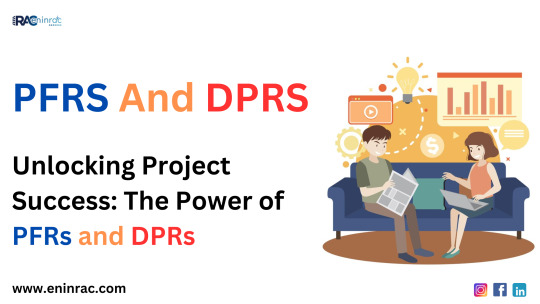
#PFR's (Pre Feasibility Reports) And DPR's (Detailed Project Reports)#Pre Feasibility Reports#Pre Feasibility Study#Pre Feasibility Study Meaning#Detail Project Report
0 notes
Text
Fulbright Scholarship Results Are Out – Congratulations to the Awardees!
The Fulbright Program, hooked up in 1946, stands as one of the maximum prestigious international instructional exchange projects, aiming to foster mutual information between the USA and other nations. Each year, thousands of scholars, college students, and professionals from around the globe are decided on to take part in this program, embarking on possibilities for superior studies, college lecturing, and graduate have a look at in the U.S. The choice technique is pretty aggressive, reflecting this system's commitment to academic excellence and cultural alternate.

Fulbright Scholarship Result Requirement
Recent Developments in the Fulbright Program
As of March 2025, several noteworthy events have spread out within the Fulbright community:
Funding Freeze and Its Implications
In February 2025, the U.S. State Department initiated a brief pause on spending to study its programs and sports. This decision has drastically impacted programs like Fulbright, Gilman, and Critical Language global scholarships. Consequently, many students who depend upon State Department funding have located themselves stranded, both inside the U.S. And abroad, facing monetary uncertainties. This abrupt investment freeze has affected over 12,500 American college students and professionals presently abroad or scheduled to participate in State Department programs within the subsequent six months. Additionally, extra than 7,four hundred global contributors in U.S.-based applications were affected.
AP NEWS
2025 U.S.-ASEAN Visiting Scholar (USAS) Program Nominees
Despite the funding challenges, the Thailand–United States Educational Foundation (Fulbright Thailand) introduced the interview results for the 2025 Fulbright U.S.-ASEAN Visiting Scholar (USAS) Program. Four prominent nominees had been decided on:
Professor Dr. Montarop Yamabhai: Professor of Molecular Biotechnology at Suranaree University of Technology, Nakhon Ratchasima.
Dr. Orawan Sriboonruang: Knowledge Management Manager on the Southeast Asian Ministers of Education Organization Regional Centre for STEM Education, Bangkok.
Assistant Professor Dr. Piya-on Numpaisal, MD.: Associate Dean on the Institute of Medicine, Suranaree University of Technology, Nakhon Ratchasima.
Dr. Totsanat Rattanakaew: Agricultural Research Officer, Expert degree, on the Land Development Department, Ministry of Agriculture and Cooperatives, Bangkok.
These nominees will continue to the final choice method carried out with the aid of the U.S. Mission to ASEAN in Jakarta.
FULBRIGHTTHAI.ORG
Fulbright 2025 Cohort Selection in Pakistan
The United States Educational Foundation in Pakistan (USEFP) discovered the choice of the Fulbright 2025 cohort. From 1,a hundred ninety applications spanning a hundred thirty five universities, 88 applicants had been chosen—70 for grasp's applications and 18 for Ph.D. Applications. This cohort's choice underscores the program's willpower to academic advantage and management capability.
USEFP NEWSLETTER
Understanding the Fulbright Selection Process
The Fulbright selection system is meticulous, designed to pick out applicants who now not handiest excel academically however also reveal ability for leadership and a commitment to fostering mutual know-how. Key components of the selection process encompass:
Project Proposal & Grant Purpose: Evaluators check the nice and feasibility of the proposed undertaking, such as its relevance to the host country and its ability impact.
Applicant Qualifications: This encompasses the candidate's academic and professional report, relevant education, accomplishments, extracurricular activities, and language education if required.
Contribution to the Fulbright Mission: Reviewers don't forget how the candidate and their task will enhance the Fulbright purpose of selling mutual understanding amongst international locations via network engagement and other activities.
FULBRIGHT ONLINE
Opportunities and Challenges Ahead
The recent funding freeze affords considerable challenges for current and potential Fulbright scholars. The uncertainty surrounding monetary support has left many in precarious conditions, highlighting the need for clean conversation and contingency making plans.
Despite these challenges, the Fulbright Program keeps to provide worthwhile opportunities. For example, the Fulbright U.S. Scholar Program for the 2025-2026 cycle is about to release, presenting over four hundred awards across six world regions. The utility system is scheduled to begin in February 2025, with a closing date in September 2024.
2 notes
·
View notes
Text

Excerpt from this Audubon story:
Too often, the debate over climate solutions centers on perceived trade-offs between habitat conservation and the clean energy transition, preserving community and allowing development, or reducing pollution and maintaining profitability. But responsible clean energy deployment can be balanced with the needs of communities and wildlife, representing a win-win that doesn’t give rise to insurmountable trade-offs. Audubon’s new report, Offshore Wind and Birds: Developing the Offshore Wind that Birds Need, confirms that offshore wind can have immense benefits for birds, people, and the economy. This report advocates for the rapid adoption of offshore wind to combat the climate crisis while protecting birds, supporting coastal communities, and addressing the growing demand from advanced manufacturing and emerging technologies.
The report was published as wildfires rage in California, communities in the Southeastern U.S. continue to deal with severe damage from Hurricanes Helene and Milton, and NASA confirmed that 2024 was the warmest year on record. NASA also found that the world has exceeded the 1.5 degrees Celsius climate threshold—a level of warming that climate scientists warn could lead to irreversible consequences if sustained. Audubon's Survival by Degrees report indicates that over two-thirds of North American bird species could face extinction due to unchecked climate change—a loss that would have dire implications for ecosystems, agriculture, and communities across the country.
The urgency for action on climate change has never been greater. Thankfully, the development of offshore wind can provide a swift and actionable solution to this crisis.
Realizing Offshore Wind’s Potential
The potential capacity of offshore wind energy off the continental U.S. is remarkable. According to the National Renewable Energy Laboratory, the total feasible offshore wind capacity along U.S. coasts is more than three times the total electricity generated nationwide in 2023. By harnessing only 10-13% of this capacity, studies show the U.S. could achieve net-zero greenhouse gas emissions economy-wide while creating as many as 390,000 jobs by 2050, fostering new investment and employment opportunities nationwide.
Offshore wind is also advantageous because it can be generated conveniently close to large population centers. In addition, consistent and strong wind speeds help offshore wind provide a steady stream of clean energy back to the grid. By producing offshore wind along the coast, we can utilize clean energy sources while reducing transmission burdens and increasing our capacity to meet growing energy demand.
Advancing Offshore Wind Development with Bird and Marine Wildlife Conservation
Audubon produced the Birds and Offshore Wind report to examine the best available science regarding the risks to birds. While persistent myths claim widespread and devastating effects of offshore wind turbines on wildlife, the science tells a different story. Our findings clearly indicate that we can responsibly deploy offshore wind in a manner that still protects birds and their habitats. That said, it is important to acknowledge that offshore wind turbines, like all infrastructure, can pose a risk to birds. These risks include turbine collisions, habitat displacement, and avoidance behavior. Fortunately, our research shows developers can effectively manage these risks without significantly increasing project costs.
To tackle the existing risks, Audubon calls for a four-step planning process:
Identify and remove critically important areas for birds from consideration for leasing.
Implement proven strategies to minimize the potential for turbines to impact birds.
Offset unavoidable impacts, when necessary, through investments in conservation.
Monitor bird movements and population trends to ensure solutions are working.
The impact of offshore wind on wildlife is neither disproportionate nor insurmountable. Proven strategies, such as reducing visible lights on turbines and using perching deterrents on turbines, have been effective in addressing bird impacts.
3 notes
·
View notes
Text
Alice’s Academic Weekend -
(This is a long one, folks)
So, I have been made aware that while I was so focused on my STEM classes (specifically math) I managed to miss several assignments in my other classes (English, French, PE10, PE9). I also have a unit test on Microbiology tomorrow that I still need to write my notes for, a short horror story due on Friday, and undoubtedly several more assignments that all need to be done before next Monday (the first reporting period deadline).

Given all this I’ve decided to put everything together into order of priority to get my shit together this weekend (and the days leading up to it) -
Wednesday (today) -
Finish writing the bulk of my biology notes ( 7 pages )
Start my note review (bio)
Do PE10 assignments 1A-1B
Finish my Desmos assignment
Start my horror story
Thursday -
Write my cues and summaries for biology (before school)
Get the bulk of my horror story done/rough draft (English, A-block)
Write the rest of my notes review (lunch)
Finish my French idioms assignment
Do sub-chapters 1-3 of my graphing work (after school)
Figure out my plan for RCM L4-5 and finalize my song list
Friday -
Submit any further PE10 work
Finish graphing chapter 3, start chapter 4
Start Biology notes for unit 3 (3 pages w/ cues)
Begin review of Math10 workbook, chapter 1 & midterm review
Finish Horror story, have it peer-reviewed if possible
Saturday -
Household chores
Piano practice, get down The Summersault King w/ LH.
Review RCM L4 theory requirements
Continue independent Desmos project
Contact school support for further details about drug testing volunteer week
Any overdue work (aside from Harrison Bergeron)
Sunday -
Rest day
Maybe math if I have not completed all assigned work in the prior days

I’ve decided to decentralize math, only doing required coursework when it’s due and a bit of review each night outside of test weeks/midterms month.
It is not feasible for me to do as much math work as I’ve been doing at the rate which I’m doing it (entire workbook units in 2-3 days rather than the 3-4 weeks they’re assigned for) as I don’t want to risk burnout and it clearly hasn’t been working, as well as the fact it has been negatively impacting my other classes.
I’m hoping to get close to my last score on my Microbiology test tomorrow (93-95%), though I doubt I’ll score quite as high given that I studied less for this one and rushed myself more. Realistically I’m thinking I’ll get in between 72%-85%, not ideal but not terrible. We are also afforded 2 retests per semester and I have yet to use either of them, so I always have that option.
It’s a lot of volume work-wise for this weekend, but I’m hoping it won’t be too difficult content-wise.

That’s all, wish me luck, folks!!
#alice studies#alice talks#chaotic academia#dark academia#light academia#dark acadamia aesthetic#light acadamia aesthetic#queer academia#top student#aesthetic#it girl#mathblr#studyblr#stemblr#study plan#study aesthetic
3 notes
·
View notes
Text
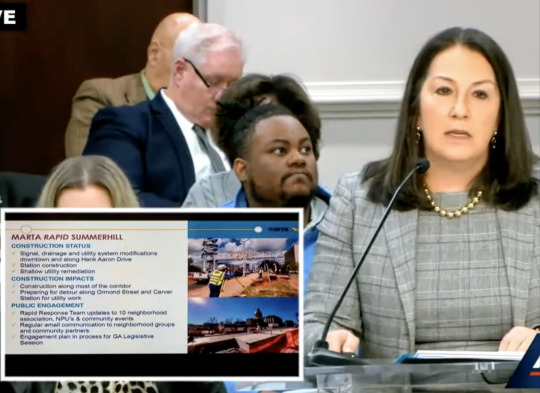
In a presentation to Atlanta City Council's transportation committee this week, MARTA representative Carrie Rocha (Chief Capital Officer) gave a report on several projects...
Summerhill Bus Rapid Transit (BRT) construction has been hampered by various unforeseen difficulties including the presence of a previously-unknown underground parking deck(!). It's possible the opening of that service may be pushed into 2026.
The projected cost of Campbellton Road BRT is now $319 million, with a completion date of 2030. They've already spent $8 million on it. Apparently there are some difficulties with the bike lanes included in the plan and adjustments may need to be made.
Relatedly, Councilmember Jason Dozier asked Rocha about the potential for a transit oriented development (TOD) at Oakland City Station and Rocha replied that they are working with the mayor's office to prioritize a TOD at that station, to connect with the Campbellton Road BRT line.
Rocha also implied that planning for the Clifton Corridor BRT is on hold while MARTA studies the feasibility of a heavy-rail infill station at Armour Yards, since that (potential) station could be a more logical connection point than Lindbergh Station.
Also, Cleveland/Metropolitan Arterial Rapid Transit (ART, an enhanced bus service though not quite BRT) is not expected to be complete until 2028. Meanwhile on MARTA's web page for Cleveland Avenue and Metropolitan Parkway ART, it still says: "Current Status: Final design near completion. Construction expected to begin in Fall 2023 with service beginning in early 2025." Oops. Might want to update that.
You can watch the full meeting here:
https://youtube.com/watch?v=8v-zT5BszGs
2 notes
·
View notes